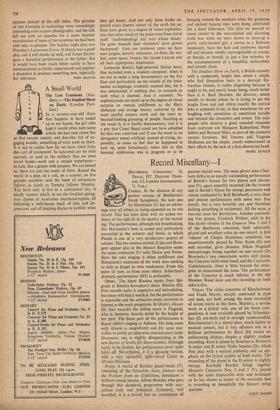Railway Children I WONDER how many adults are as enthralled
as I am watching The Railway Children on BBC Children's Hour on Sundays. Connoisseurs of E. Nesbit will agree, I think, that it is by no means her best story, but because of the train motive, which producers have loved since the early days of the film, it is probably the one best suited to television. The charm for older people is in the evocation of scenes from what we like to think was a gentler age, from that sunlit Edwardian era which was disturbed only by the suffragettes, the troubles in Ulster, LG's budgets, a great constitutional crisis and awareness of the growing menace of Germany. I have no personal memories of the period but, like many people of my generation, I have some vivid imaginary memories, for many of the children's books circulating in the 1920s were produced before the First World War and were illustrated with pictures of little girls in long pinafores and boys in sailor suits riding in governess carts. The Railway Children is being produced in period costume and is adored by all the children I know. It may in fact be univer- sally enjoyed. E. Nesbit was a Socialist and the condescension she shows to the working people was a little less marked than in other writers of her time. Moreover, the railway children, though they are middle-class, are living in what was then called 'reduced circumstances.' This may be a help in bridging the class barriers, for the modern theory of makers of children's films is that urban working-class children have little patience with stories about nannies and cooks and gardeners who bowl lobs to Master. John in the paddock. Certainly children of today seem to enjoy the Groves and the Appleyards, who haven't a pony among the lot of them.
The great thing to be said for the Appleyards, the Groves and the railway children is that they contain little violence. I am tired of cowboys shooting up my living room between five and six in the evening. As a rule there is nothing to com- plain about the quality of the violence on tele- vision. It is kept within acceptable bounds. But I am concerned about the quantity of it. There may come a time when we are so used to the present degree of violence that it ceases to thrill and producers will want to capture audiences by a further turn of the sadistic screw. I do not want to see anything stronger than that efficient Canadian piece. The Witness, which was given on Friday, or that little film Into the Night, shown the following evening, in which the intended vic- tims of a kidnapper were set to dig their own graves. The BBC Saturday serial Joyous Errand is, so far, less violent than most serials. This was the second instalment and I had missed the first one. Since there was no pick-up in the Radio Times and none in the piece itself until it was half-way through, a good deal of it was wasted. Would it be bad television art simply to print a synopsis on the screen for the benefit of those frivolous viewers who have missed what has gone before? I enjoyed Sir Edward Appleton's 'Science in Britain,' which was simply a propaganda talk to encourage people to take an interest in science and technology and for the young to train for it. The programme was good because it followed an art form which has been in use for a century, that of the lantern lecture, though with moving pictures instead of the still slides. The pictures of our triumphs in technology were exceedingly interesting even as pure photography, and the talk left me with an appetite for a more detailed examination of some of the mysteries we had been able only to glimpse. The Sunday night play was Priestley's Laburnum Grove. It always was a good play and it still stands up well, and James Hayter gave a beautiful performance as the father. But it would have been much better surely to have commissioned so fertile, experienced and popular a dramatist to produce something new, especially



































 Previous page
Previous page